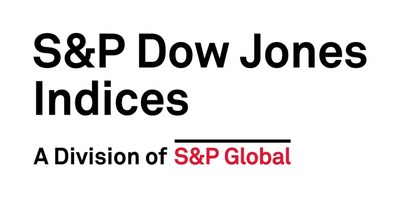- Can you really be addicted to food? Researchers are uncovering convincing similarities to drug addiction Seattle Post-Intelligencer
- Many Older Adults Show Signs of Ultra-Processed Food Addiction The Sun Times News
- Are ultraprocessed foods truly…
Blog
-
Can you really be addicted to food? Researchers are uncovering convincing similarities to drug addiction – Seattle Post-Intelligencer
-

Starting 5, Oct. 10: China Games LIVE on NBA TV
New country. Same T-Jass pulling off trick shots.

5 STORIES IN TODAY’S EDITION 🏀
Oct. 10, 2025
NBA China Games: Suns & Nets square off NOW for the first of two games in Macao
Top 5 Spotlight: A trio of top five picks lead a four-game…
Continue Reading
-
S&P Dow Jones Indices Reports U.S. Common Indicated Dividend Payments Increase of $10.6 Billion in Q3 2025 as Dividend Growth Continues to Be Slow
S&P Dow Jones Indices Reports U.S. Common Indicated Dividend Payments Increase of $10.6 Billion in Q3 2025 as Dividend Growth Continues to Be Slow
- Q3 2025 U.S. common dividend increases were $14.0 billion, up 43.0% from $9.8 billion in Q2 2025 and down 0.7% from $14.1 billion in Q3 2024.
- Q3 2025 U.S. common dividend decreases were $3.4 billion, up 46.1% from $2.3 billion in Q2 2025 and down 25.2% from $4.6 billion in Q3 2024.
- Q3 2025 net indicated dividend rate change increased $10.6 billion.
- For the 12-months ending September 2025 U.S. common dividend increases were $57.5 billion, down 23.1% from the 12-month September 2024 period’s $74.7 billion; decreases were down 36.4% to $12.4 billion compared to $19.5 billion for the prior 12-month period.
- The net 12-month September 2025 indicated dividend increase was $45.1 billion compared to $44.1 billion for the 12-months ending June 2025 and $55.3 billion for the prior 12-month September 2024 period.
NEW YORK, Oct. 10, 2025 /PRNewswire/ — S&P Dow Jones Indices today announced the indicated dividend net changes (increases less decreases) for U.S. domestic common stocks increased $10.6 billion during Q3 2025, compared to the $7.4 billion increase in Q2 2025 and the $9.5 billion increase in Q3 2024. Increases were $14.0 billion versus $9.8 billion for Q2 2025 and $14.1 billion in Q3 2024. Decreases were $3.4 billion compared to $2.3 billion in Q2 2025 and $4.6 billion in Q3 2024.

For the 12-months ending September 2025, the net dividend rate increased $45.1 billion compared to the net $55.3 billion for the prior 12-months ending September 2024. For 2024 it was up $53.4 billion, 2023 was $36.5 billion, 2022 was $68.2 billion, and in 2021 it was $69.8 billion, with the 2020 net change negative as 43 S&P 500 issues suspended their dividends at –$40.8 billion. Increases for the 12-month September 2025 period were $57.5 billion versus the previous $74.7 billion, and decreases were $12.4 billion compared to $19.5 billion in the previous period.
“Dividend growth continued to be slow in Q3 2025, as concern over forward cash commitment was inhabited by the uncertainty over the evolving tariff polices, along with their impact on sales, costs and the general economy. Overall, companies continued to increase their dividends, but with smaller increases for those on a perceived schedule (annually). For companies not on a perceived schedule, many appeared to put off their actions for now,” said Howard Silverblatt, Senior Index Analyst at S&P Dow Jones Indices.
Silverblatt continued: “Given the start of tariff and policy clarity in Q3, companies may increase their payouts but still require more legislative and executive assurances for forward, long-term dividend commitments. Current tax and write-off benefits from the ‘One Big Beautiful Bill’ have added to corporate earnings; as expected increased tax refunds for consumers (starting in February 2026) has permitted increased sales expectations, giving companies short-term assurances but not the longer-term confidence for larger dividend commitment.”
Silverblatt concluded: “Working with a base case for a higher-level resolution of economic related issues, lower interest rates from the FOMC, and continued U.S. consumer and equity support, Q4 dividends appear in place to set to a new quarterly record, with the full year S&P 500 payment expected to post a record level, nearing a 6% increase in dividend payments over 2024.”
S&P 500® Dividends
On a per share basis, S&P 500 Q3 2025 dividend payments increased 1.7% to $19.81 per share from Q2 2025’s $19.48 and were up 6.0% from Q3 2024’s $18.68 payment. For the 12-months ending September 2025, the index paid $78.48, up 6.9% compared to $73.40 for the 12-month September 2024 period; for 2024 it paid $74.83 and in 2023 it paid $70.30.
Additional findings from S&P Dow Jones Indices’ quarterly analysis of U.S. dividend activity includes:
Dividend Increases (defined as either an increase or initiation in dividend payments):
- 421 dividend increases were reported during Q3 2025 compared to 480 during Q3 2024, a 12.3% year-over-year decrease.
- Total dividend increases were $14.0 billion for the quarter, down from $14.1 billion in Q3 2024.
- For the 12-months ending in September 2025, 2,294 issues increased their payments, down from the 2,522 issues for the 12-months ending in September 2024.
- Total dividend increases for the 12-month September 2025 period were $57.5 billion, down from $74.7 billion in the prior 12-month period.
Dividend Decreases (defined as either a decrease or suspension in dividend payments):
- 43 issues decreased dividends in Q3 2025, a 59.3% year-over-year increase compared to 27 issues in Q3 2024.
- Dividend decreases were $3.4 billion in Q3 2025, compared to $4.6 billion in Q3 2024.
- For the 12-months ending in September 2025, 171 issues decreased their dividend payments, a 22.1% increase compared to the 140 decreases within the prior 12-month period.
- Dividend decreases were $12.4 billion for the current 12-month period, a 36.4% decrease from the prior 12-month period’s $19.5 billion.
Non-S&P 500 Domestic Common Issues (for issues yielding 10% or less):
- The percentage of non-S&P 500 domestic dividend-paying common issues declined to 19.6% from Q2 2025’s 20.0% and was down from the Q3 2024’s 20.4%.
- The weighted indicated dividend yield for paying issues was 2.49% in Q3 2025, down from the 2.70% in Q2 2025 and down from 2.69% in Q3 2024. The average indicated yield decreased to 3.11% in Q3 2025 compared to Q2 2025’s 3.23% and was down from 3.18% in Q3 2024.
Large-, Mid-, and Small-Cap Dividends:
- 407 issues or 80.9% within the S&P 500 currently pay a dividend, the same as in Q2 2025 and up from the 404 which paid in Q3 2024; 28 of the 30 constituents within the Dow Jones Industrial Average® pay a dividend with an average yield of 1.93% (1.97% in Q2 2025) for all issues and 2.07% (2.11%) for the paying issues.
- 65.3% of S&P MidCap 400® issues pay a dividend, down from 66.1% in Q2 2025 and down from 66.6% in Q3 2024. 57.6% of S&P SmallCap 600® issues pay a dividend, up from 57.3% in Q2 2025 and down from 58.0% in Q3 2024.
- Yields were lower for Q3 2025 as prices increased faster than dividends, large-cap yields decreased to 1.17% (1.25% for Q2 2025 and 1.29% for Q3 2024), mid-caps decreased to 1.40% (1.50% for Q2 2025 and 1.42% for Q3 2024), and small-caps decreased to 1.57% (1.70% for Q2 2025 and 1.60% for Q3 2024).
- The yields across dividend-paying market-size classifications varied with large-caps decreasing to 1.42% for Q3 2025 (1.51% in Q2 2025 and 1.54% in Q3 2024), mid-caps decreasing to 2.23% (2.31% in Q2 2025 and 2.11% in Q3 2024), and small-caps decreasing to 2.76% (3.00% in Q2 2025 and 2.69% in Q3 2024).
For more information about S&P Dow Jones Indices, please visit https://www.spglobal.com/spdji/en/.
ABOUT S&P DOW JONES INDICES
S&P Dow Jones Indices is the largest global resource for essential index-based concepts, data and research, and home to iconic financial market indicators, such as the S&P 500® and the Dow Jones Industrial Average®. More assets are invested in products based on our indices than products based on indices from any other provider in the world. Since Charles Dow invented the first index in 1884, S&P DJI has been innovating and developing indices across the spectrum of asset classes helping to define the way investors measure and trade the markets.
S&P Dow Jones Indices is a division of S&P Global (NYSE: SPGI), which provides essential intelligence for individuals, companies, and governments to make decisions with confidence. For more information, visit https://www.spglobal.com/spdji/en/.
S&P DJI MEDIA CONTACTS:
Alyssa Augustyn, External Communications – Americas
(+1) 773 919 4732 alyssa.augustyn@spglobal.comS&P DJI INDEX SERVICES:
Howard Silverblatt, Senior Index Analyst
(+1) 973 769 2306 howard.silverblatt@spglobal.comSOURCE S&P Dow Jones Indices
Continue Reading
-

Enslavement, immolation and a HIV diagnosis: the artists expressing harsh truths with collage | Art and design
When the artist Sunil Gupta found out he was HIV positive in July 1995, making a collage helped him to process how he felt. He used an image of himself taken on the day of his diagnosis clutching his knees and looking defiantly into the camera,…
Continue Reading
-

Brisbane 2032 unveils strategy to boost local business and create a long-term Games legacy
Following the example of Paris 2024, where 90 per cent of suppliers were based in France and 80 per cent were SMEs, Brisbane 2032 aims to prioritise regional businesses, encourage sustainable sourcing, and embed long-term economic value into…
Continue Reading
-

It Matters That Louis Tomlinson Has Been Open About Battling With Grief
“For your friends, this will last 10 minutes. For you, it’ll be a lifetime.” I’ll never forget the words of my housemistress, crouched over me in her office, as she held off the people trying to find and comfort me. I’d just been told…
Continue Reading
-

Well-managed solar farms could help boost declining bumblebee populations in the UK, new study finds
ADVERTISEMENT
Bumblebees are crucial for ecosystems. They pollinate wild plants and crops, keeping habitats healthy.
But many populations in Europe are declining because of…
Continue Reading
-

Cautious OPEC+ Strategy Offsets U.S. Output Boom
Light crude oil futures settled at $61.50 on Thursday, up $0.62 or 1.02% for the week so far, with one trading day remaining. The move capped a choppy week marked by cautious optimism surrounding OPEC+ supply restraint, geopolitical developments in the Middle East, and persistent oversupply concerns in the U.S. and global markets. The bullish and bearish factors largely neutralized each other, but near-term direction remains uncertain as traders weigh competing signals heading into next week.
OPEC+ Maintains Cautious Output Path Despite Surplus Risks
A key bullish catalyst during the week was OPEC+’s decision to raise production by just 137,000 barrels per day in November—matching October’s increase and falling below market expectations. Some had anticipated a much larger hike, particularly from Saudi Arabia, which reportedly advocated for a more aggressive supply return to regain market share. In contrast, Russia favored a conservative approach to avoid triggering another wave of price pressure.
The restrained increase signaled internal divisions but ultimately supported prices early in the week. Analysts said the move showed the group’s continued desire to manage the market carefully amid growing forecasts for a global crude surplus in the fourth quarter. However, with OPEC+ production already up by 2.7 million bpd year-to-date, concerns remain that the collective output path could still outpace demand growth going forward.
Geopolitical Developments…
Continue Reading
-

Tune In: Orlando Pride vs Portland Thorns on Amazon Prime
The Need to Know:
Date & Time: Friday, Oct. 10, 8 p.m. ET
Venue: Inter&Co Stadium, Orlando, Fla.
Competition: NWSL Regular SeasonWhere to Watch/Listen:
Broadcast: Prime Video (USA), ESPN SSA…Continue Reading
